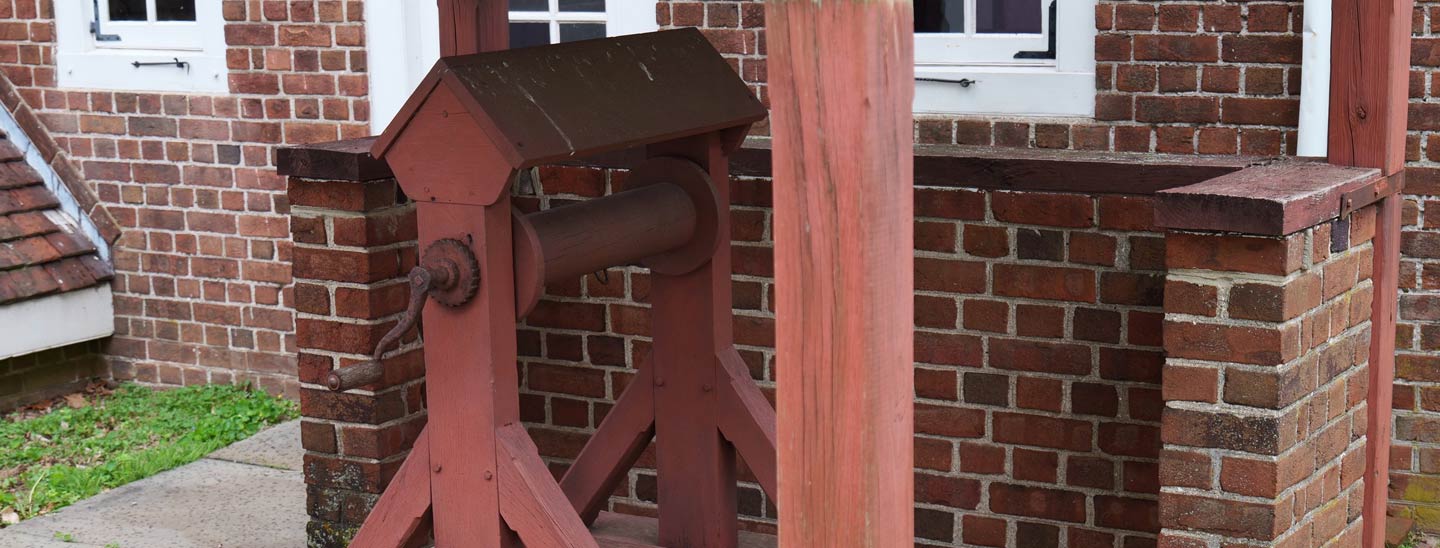
For reservations to experience “nkwiluntàmën: I long for it; I am lonesome for it (such as the sound of a drum)” by Indigenous artist Nathan Young, please go to https://nkwiluntamen.com/
PENNSBURY & COLONIAL REVIVAL
The Pennsbury Puzzle: Does it look like the original?
This question can be answered with a firm and resounding shrug of the shoulders. There simply is not enough information available to draw many conclusions about what Pennsbury looked like in 1700.
Archeology confirms a brick front and clapboard back, as reported by Penn in 1685 when he directed “what you can do with bricks, do, what you cant, doe it with good timbers … and we can brick it afterwards.” Unfortunately, Penn was never able to complete the brick work.
Archeology also offers clues as to the physical features of the house: the metal latches, the color of the tiles, the footprint of the House and the Kitchen House. But Archeology cannot confirm where and how metals and tiles were used, nor where other, less permanent, buildings were situated.
Two inventories of objects in the house (1687 and 1701) provide a detailed look at the rooms and how they were used. Unfortunately this source cannot be used to determine a floor plan.
Household accounts and letters from the Penn family, servants, and friends offer a glimpse into the daily life of the people using the estate.
Sometimes the evidence is contradictory. These three drawings of the House, both done by surveyors on maps, look nothing like each other.
As historians and museum professionals, the staff must balance the evidence and make difficult decisions regarding the appearance of the site. We strive to present as careful and honest a picture of the 17th Century as we can.
What is Colonial Revival?
The American Centennial celebration in the 1870s created a wave of patriotic fervor that inspired many Americans to honor their own history. In addition, many hoped to help the flood of new immigrants become proud Americans with a strong sense of American Traditions and Cultures.
Architectural and Interior design styles sprang up after WWI from this interest in the past. Called Colonial Revival, this style was used extensively in public buildings, reconstructions of historic buildings (as at Pennsbury Manor and Williamsburg) and in private homes.
Colonial Revival designs didn’t accurately reflect historical models. Mixing features from the wide geographic and historical category of “colonial,” colonial revival presented a romantic ideal of the colonial period.
